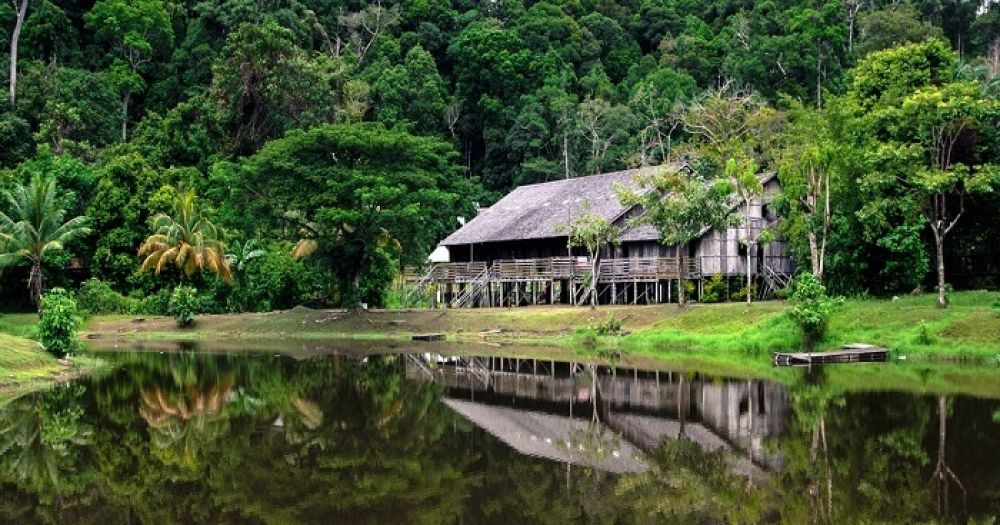

Located in the shadow of Mount Santubong, just 35 kilometers away from Kuching, Malaysia, the Sarawak Cultural Village is often referred to as a 'living museum' for its immersive display of the cultural heritage of the region's indigenous ethnic groups. Since its establishment in 1990, it has become an integral part of Sarawak's tourism history and continues to draw visitors interested in the rich tapestry of Borneo's traditional cultures.
The idea behind the Sarawak Cultural Village was born out of the desire to preserve and showcase the diverse customs, lifestyles, and artistic heritage of the area's indigenous population. Spanning across 17 acres, this cultural extravaganza was meticulously put together to represent the variety found within Sarawak's ethnic communities. The official opening in 1991 marked the beginning of an immersive cultural experience that would educate and fascinate visitors for decades to come.
The village operates as a living museum where visitors can experience firsthand the traditions and lifestyles of Sarawak's many ethnic groups, including Iban, Bidayuh, Orang Ulu, Penan, Malay, Melanau and Chinese. Traditional houses for each of these groups have been constructed within the compound, often by the indigenous people themselves, ensuring authenticity in every nail and weave. Craftsmen and performers dressed in traditional attire enhance this cultural tapestry by demonstrating age-old craft techniques and performing music and dance that have been passed down through generations.
One of the highlights of the Sarawak Cultural Village's calendar is the annual Rainforest World Music Festival (RWMF). Launched in 1998, the festival has gained international acclaim, bringing together world-renowned musicians and indigenous artists in a celebration of cultural diversity and harmony. The festival draws thousands of music enthusiasts from across the globe, significantly contributing to the tourism boom in the region.
Aside from daily performances and exhibitions, the village also offers interactive workshops where visitors can learn traditional skills such as beadwork, bamboo carving, and weaving. This hands-on approach to cultural education is part of what makes the Sarawak Cultural Village a unique tourist destination.
In line with current tourism trends, the Sarawak Cultural Village is also tapping into the eco-tourism market. Efforts are being made to promote sustainability in the daily operations of the village, recognizing the importance of preserving the natural and cultural heritage for future generations while providing an enriching experience for tourists.
The history of tourism at the Sarawak Cultural Village is a testament to the timeless allure of cultural discovery. As one of the premier attractions in Sarawak, it continues to evolve and adapt to changing tourism trends while staying true to its mission of cultural preservation and education. The Sarawak Cultural Village remains a pivotal part of Sarawak's tourism scene, ensuring that visitors leave with a deeper understanding and appreciation of the island's unique cultural mosaic.